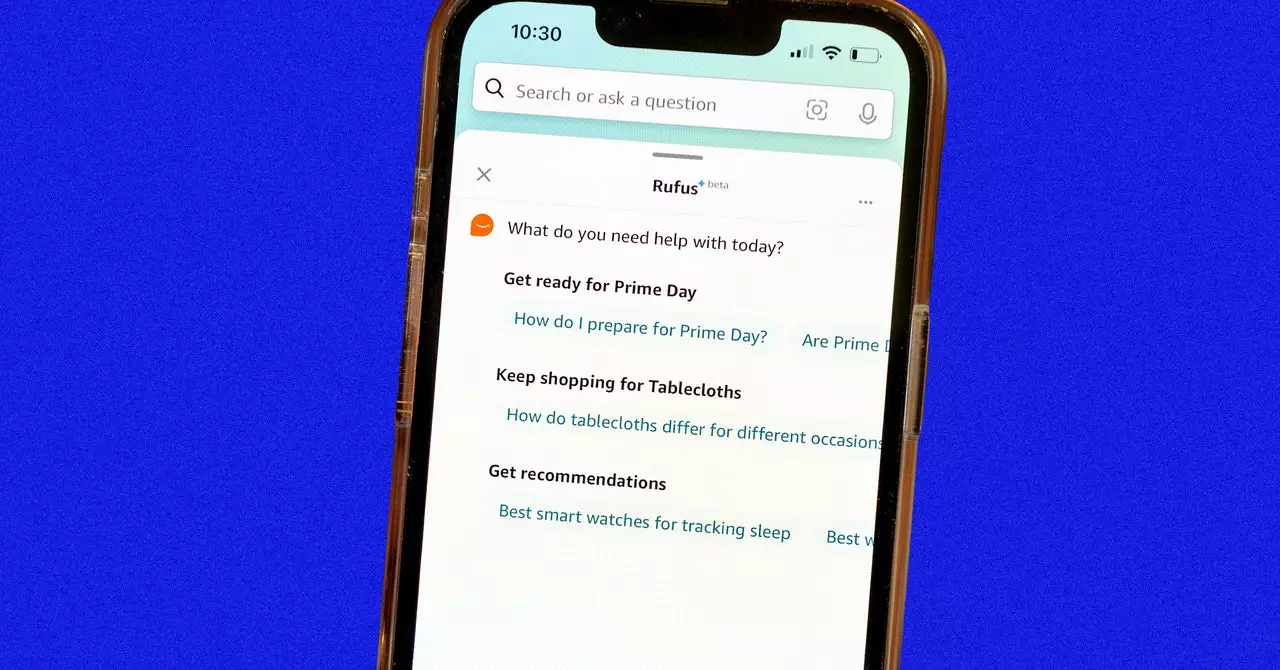Amazon is known for its continuous innovation and expanding reach into various markets. The tech giant has recently unveiled a chatbot named Rufus, which could profoundly change how consumers interact with the platform, especially regarding price transparency. Developed under the supervision of Trishul Chilimbi, an Amazon vice president, Rufus draws from an extensive database encompassing all products, reviews, and user queries available on Amazon’s platform, coupled with public data from other sources. This rich training allows Rufus to assist users in retrieving and summarizing the information they need — an appealing prospect for those seeking a seamless shopping experience.
One of the most intriguing prospects of Rufus lies in its ability to share price history data — information that is not readily accessible through conventional interfaces. Price tracking tools such as CamelCamelCamel and Glass It have been instrumental in helping users make informed purchasing decisions. However, tests conducted by WIRED showed that these tools struggled to provide data when it was most needed. For instance, Keepa, another price tracking service, offered valuable historical pricing data, including notable price drops, but its competitors voiced a sense of confidence that Rufus wouldn’t significantly disrupt their operations. According to Amor Avhad, founder of Glass It, the move to provide price history data could benefit consumers as they strive for greater transparency in their purchasing decisions.
Despite its potential benefits, Rufus also highlights Amazon’s ongoing struggles with transparency. The company has faced criticism from outlets like the U.S. Federal Trade Commission for allegedly misleading practices, particularly around subscription renewals and pricing algorithms. Traditionally, Amazon has kept certain pricing aspects behind a veil, and while they notify users of price changes, the intricacies of these changes are often lost on the average consumer. The introduction of Rufus could either help demystify pricing or introduce more complexities for users attempting to navigate the buying process.
Moreover, the way businesses like Radius Outfitters respond to this tool could reveal much about its practical merits. Tristan Månsson-Perrone, who operates as an Amazon seller, remarked that his pricing strategies remain static, further questioning what insights Rufus could genuinely provide to consumers regarding his products. For some sellers, the potential value of Rufus remains uncertain, overshadowing its glossy innovations.
Rufus has been designed as a trusted companion, capable of highlighting product pros and cons and suggesting alternatives beyond Amazon’s inventory. This is particularly essential in the age where ethical considerations weigh heavily on consumers. However, the limitations of Rufus become apparent in instances where users seek guidance on brand ethics amidst contentious socio-political climates. The chatbot fell short when it came to ethical shopping queries, demonstrating its limitations as a comprehensive shopping assistant.
A significant question that arises from the integration of AI-driven tools like Rufus is the potential impact on the professional review landscape. Content creators and comparative review platforms currently play a crucial role in guiding consumer choices; Rufus could inadvertently jeopardize their revenue streams by offering a wealth of information independently.
Amazon’s Rufus presents both exciting opportunities and considerable challenges for consumers and merchants alike. By potentially delivering unprecedented access to price history and product insights, it could revolutionize shopping behavior and promote informed decisions. Yet, the complexities it introduces, particularly concerning transparency and the possible undermining of professional reviews, must not be overlooked. As Rufus evolves, its future impact will depend on how effectively it can balance these facets, transitioning it from a mere chatbot into a genuinely valuable shopping companion.

